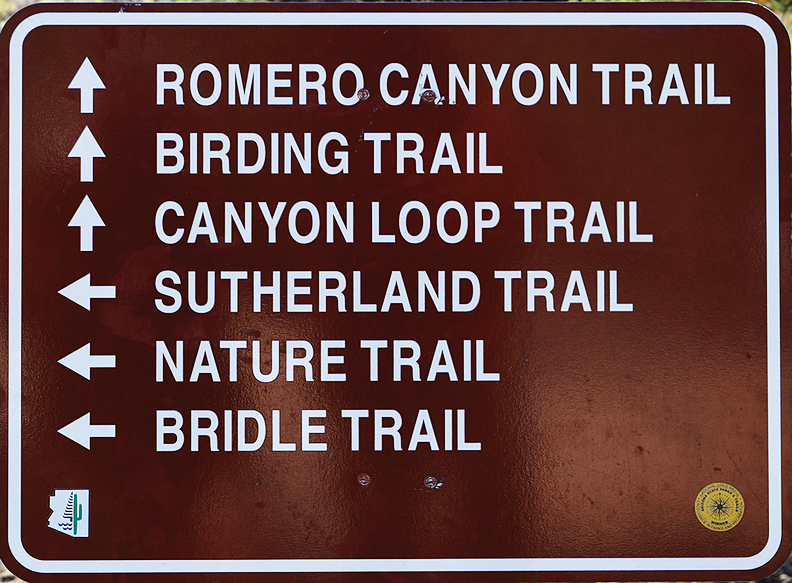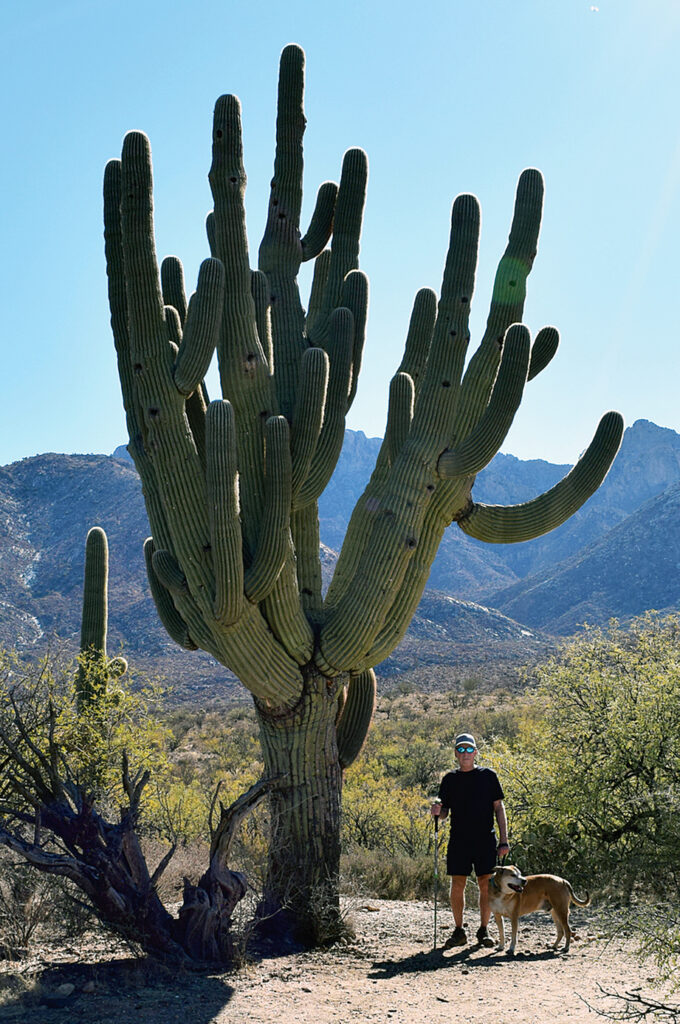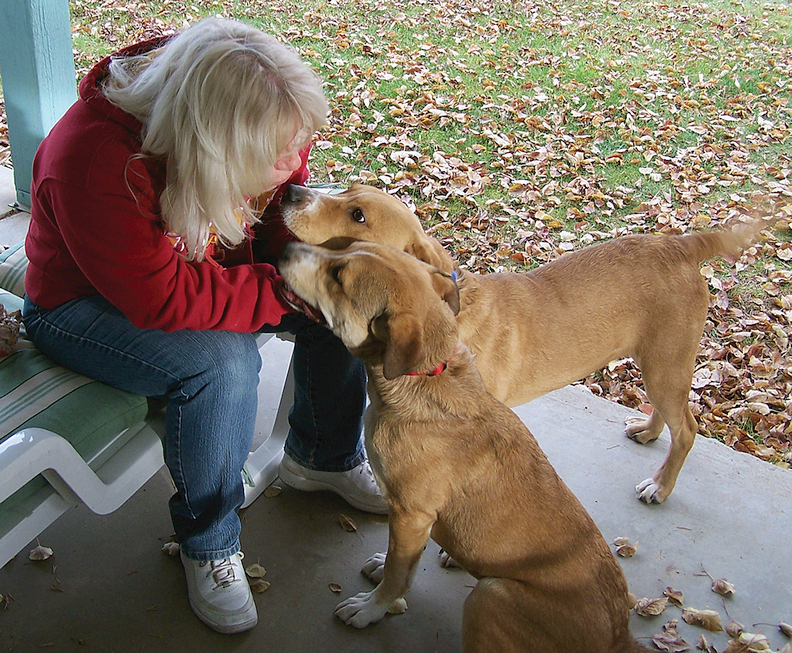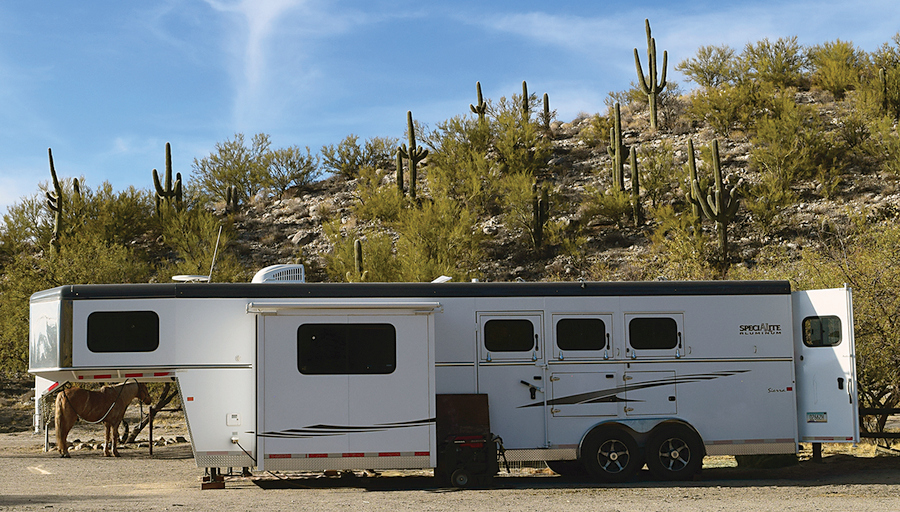Story and photos by Cheryl Hartz

Two years after we lost his brother, Duke, we had to say goodbye on November 12 to our loving canine companion, Jack. He began 2021 by camping with us in January at Catalina State Park, so it’s fitting that the 2022 issue will be my farewell to him. I wish them and their predecessors, Barney and Mea, much riotous romping over the Rainbow Bridge. All were eager and enthusiastic hikers. Trails are emptier without them.

Camping immediately outside of Tucson in January you would expect nice mild temperatures, right? Well, that was true during daylight, but not so much at night at the base of the Santa Catalina Mountains in the 5,500-acre Catalina State Park. Evenings, we happily huddled around a gas firepit in our screened canopy that held in the heat surprisingly well.
Fortunately, daytime temperatures were near-perfect. Roundtrip times on the park’s eight trails vary from 30 minutes to more than 8 hours, so we hiked sections of several. Whichever you choose, know you will be surrounded by nearly 5,000 saguaros and 150 bird species, along with the usual suspects of desert mammals, reptiles and flora.

Romero Ruins Interpretive Trail is a short 3/4-mile loop, but will take you deep into history on top of a ridge. It is the site of a prehistoric Hohokam village. (No horses or bikes allowed.) It also boasts two preserved ball courts. Games might have been a way for communities to gather, settle disputes, or just have fun.
Remains of a large 5-foot-high enclosing wall were not discovered until 1990. The wall was constructed sometime after AD 1150, possibly for defensive purposes, when about 100 people lived in single rectangular rooms of rock on the hilltop. Up to 300 people were previous residents in an extensive village of pithouses several centuries prior. These residences had perishable pole and brush frames.

Seven large trash mounds and numerous smaller ones around the site have yielded a wealth of information. Their diet seems to have consisted mostly of jackrabbit, along with deer and bighorn sheep, while agave and corn were the most prevalent plant foods. The mounds also revealed distinctive red pottery made in the Tucson area around AD 500. Later pottery pieces, higher on the trash heap, likely were traded from the Phoenix area.

More short hiking choices include a 1-mile Nature trail, a 1-mile Birding trail, a 1.4-mile (one way) Bridle trail connecting the Equestrian Center to the trailhead parking lot, and the 2.3-mile Canyon Loop trail.
The Sutherland Trail extends 9 miles (one way) into the Bighorn Sheep Management Areas which is closed to dogs. Do your research before attempting this one. It ends at the Mt. Lemmon trail at 8,600 feet. Popular for horseback and mountain bike riding is the 8.6-mile (one way) 50-year Trail.
Romero Canyon trail is 7.2 miles one way but currently open only 2.8 miles to Romero Pools. This area was completed closed last year, as the Forest Service worked to alleviate fire damage from 2019.
Happy winter hiking!


We at Prescott Dog mourn Duke and Jack’s passing.
They were valued members of our writing staff.
Our Deepest Condolences, Cheryl.
Thank you for sharing your adventures with us.

